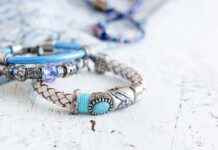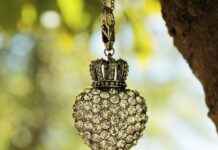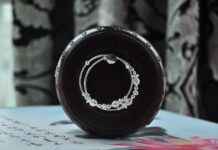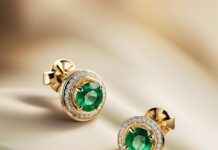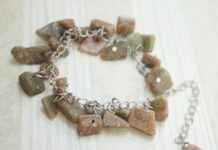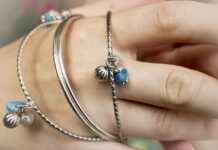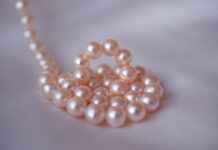This ultimate guide delves into the fascinating realm of antique and vintage jewelry shopping, providing you with essential tips, insights, and information necessary for making informed purchasing decisions. Whether you are a seasoned collector or a newcomer to the world of jewelry, this guide will help you navigate the intricacies of finding unique pieces that tell a story.
What is Antique and Vintage Jewelry?
Understanding the definitions of antique and vintage jewelry is fundamental for any enthusiast. Antique jewelry typically refers to pieces that are over 100 years old, while vintage jewelry encompasses items that are at least 20 years old but less than 100. Recognizing these distinctions is crucial for appreciating the historical context and value of each piece.
How to Identify Authentic Antique Jewelry
Identifying authentic pieces requires a keen eye for detail. Familiarize yourself with key characteristics such as craftsmanship, materials, and design styles. Look for signs of wear that suggest age, and be aware of common materials like gold, silver, and various gemstones.
Tips for Buying Vintage Jewelry
- Research the seller’s reputation.
- Examine the condition of the piece.
- Ask for documentation of authenticity.
Where to Shop for Antique and Vintage Jewelry
Finding the right places to shop can greatly enhance your experience. Consider exploring:
- Local antique shops for hands-on experiences.
- Online marketplaces for a broader selection.
How to Care for Antique and Vintage Jewelry
Proper maintenance is vital for preserving the beauty and value of your jewelry. Use gentle cleaning methods and store pieces in a way that protects them from environmental damage.
Understanding the Value of Antique and Vintage Jewelry
Several factors, including age, rarity, and condition, influence the value of jewelry. Getting a professional appraisal can provide you with crucial information regarding your pieces.
In conclusion, shopping for antique and vintage jewelry is an exciting journey filled with opportunities to discover remarkable pieces. By equipping yourself with knowledge and resources, you can confidently navigate this enchanting world and find treasures that resonate with your personal style.
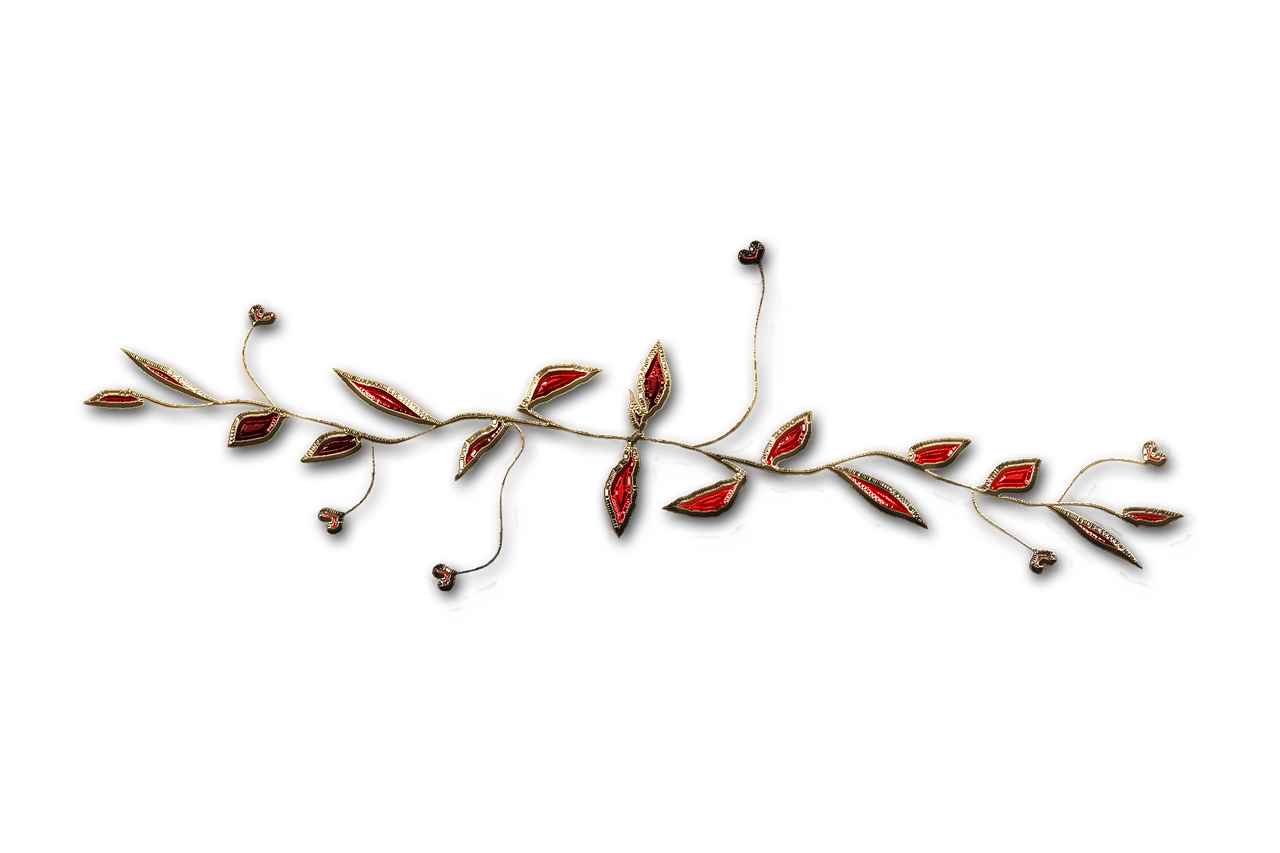
What is Antique and Vintage Jewelry?
Understanding the distinctions between antique and vintage jewelry is essential for both collectors and enthusiasts. This knowledge not only enriches the shopping experience but also enhances appreciation for the history and craftsmanship behind these remarkable pieces.
Antique jewelry is defined as items that are at least 100 years old. These pieces often reflect the artistic styles and cultural influences of the era they were created in, making them not just accessories but also historical artifacts. On the other hand, vintage jewelry typically refers to items that are 20 to 100 years old. While vintage pieces may not possess the same age as antiques, they still carry significant charm and historical value.
One of the main differences between antique and vintage jewelry lies in their craftsmanship and design styles. Antique jewelry often showcases intricate details, handmade techniques, and materials that were prevalent in earlier times. In contrast, vintage jewelry may incorporate more modern techniques and styles, reflecting the trends of the 20th century.
For collectors, distinguishing between these two categories is crucial. It helps in understanding the market value of pieces, as antiques generally command higher prices due to their age and rarity. Furthermore, the emotional connection to history and the stories behind these pieces can significantly enhance their appeal.
In summary, recognizing the definitions and differences between antique and vintage jewelry is vital. This understanding serves as a foundation for informed shopping, allowing collectors and enthusiasts to appreciate the unique qualities of each piece. Whether you are drawn to the elegance of antique jewelry or the nostalgia of vintage pieces, having this knowledge will enrich your collecting journey.
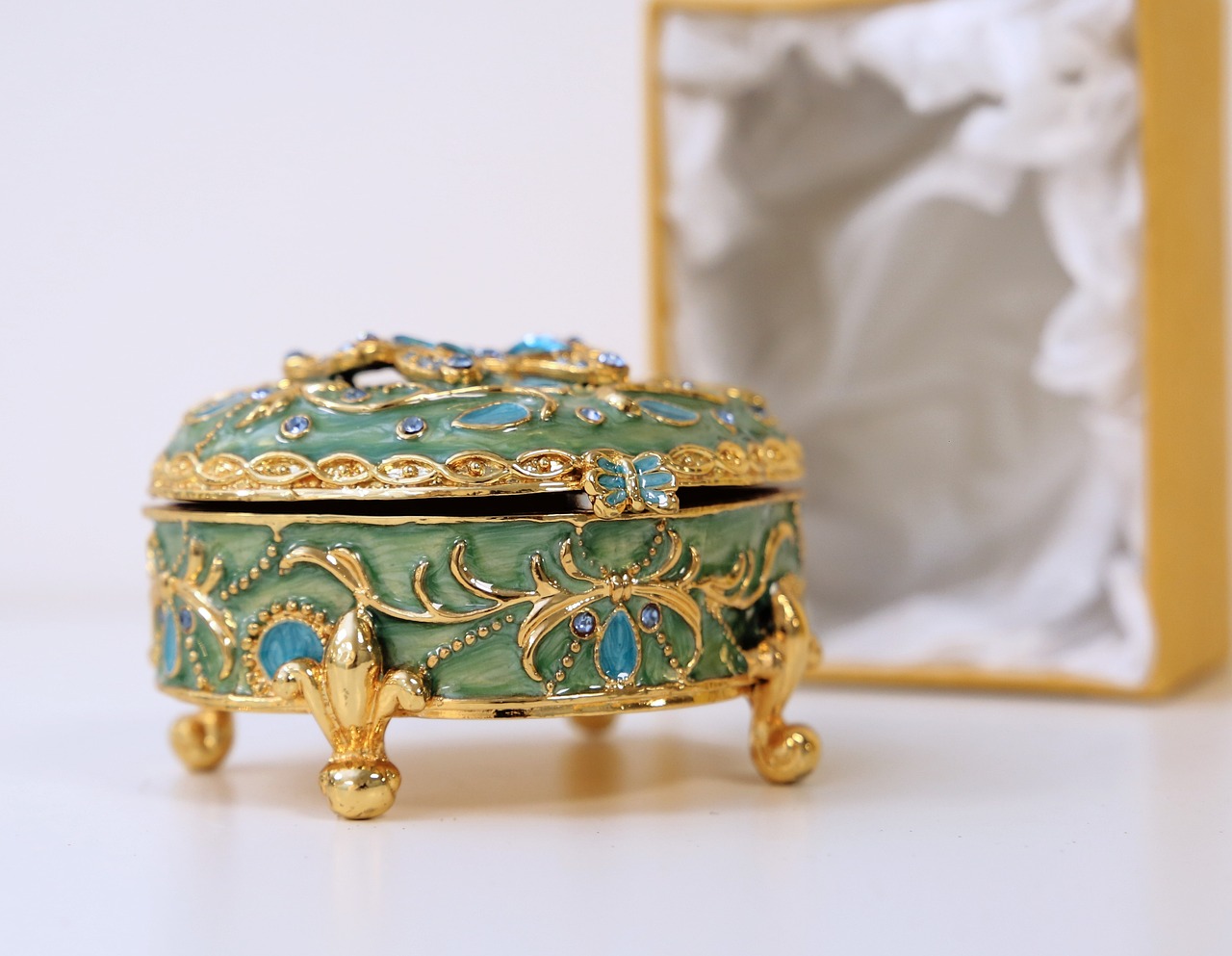
How to Identify Authentic Antique Jewelry
Identifying authentic antique jewelry is an essential skill for collectors and enthusiasts alike. With the market flooded with reproductions and modern imitations, having a keen eye for detail can make all the difference. To successfully distinguish genuine pieces from fakes, one must understand various characteristics that define authentic antique jewelry.
First and foremost, craftsmanship plays a critical role in identifying authentic pieces. Antique jewelry is often characterized by intricate, hand-crafted details that reflect the techniques and skills of artisans from the period it was made. Look for signs of handwork, such as irregularities in design and finish, which can indicate a piece’s authenticity.
Next, the materials used in the jewelry are vital indicators. Genuine antique pieces are typically made from high-quality metals like gold or silver, and often incorporate precious gemstones that were sourced during the era. Familiarizing yourself with the hallmarks and stamps on the jewelry can also provide valuable information regarding its origin and age.
Another important factor is the design style. Different periods in jewelry history, such as the Victorian, Edwardian, and Art Deco eras, have distinct styles that can help in identification. Understanding these styles will allow you to appreciate the aesthetic and historical context of each piece.
Lastly, consulting with experts or reputable appraisers can provide additional insights and validation. They can help assess the authenticity of a piece based on their extensive knowledge and experience in the field.
In conclusion, identifying authentic antique jewelry requires a combination of knowledge regarding craftsmanship, materials, and design styles. By honing these skills, collectors can confidently navigate the world of antique jewelry, ensuring that each purchase is a genuine addition to their collection.
Key Characteristics of Antique Jewelry
When delving into the world of antique jewelry, it is essential to understand its key characteristics to truly appreciate the artistry and history behind each piece. Antique jewelry is not merely about age; it encompasses a rich tapestry of style, craftsmanship, and materials that reflect the era in which it was created. By familiarizing yourself with these elements, you can enhance your ability to identify and value genuine antique jewelry when shopping.
Age is one of the most significant factors in determining whether a piece qualifies as antique. Generally, jewelry that is over 100 years old is considered antique. This age factor often correlates with unique design elements and craftsmanship techniques that are no longer prevalent in modern jewelry-making.
The style of antique jewelry varies greatly depending on the historical period. For instance, pieces from the Victorian era often feature intricate designs and romantic motifs, while Art Deco jewelry is characterized by geometric shapes and bold colors. Understanding these styles can help you appreciate the aesthetic value of a piece and its historical context.
Craftsmanship is another critical characteristic. Antique jewelry is often handmade, showcasing exceptional skill and attention to detail. Techniques such as filigree, engraving, and stone setting can indicate the quality and authenticity of a piece. Recognizing these techniques can help you distinguish between genuine antique jewelry and modern reproductions.
Additionally, the materials used in antique jewelry, such as gold, silver, and various gemstones, hold historical significance. Each material has its own value and can affect the overall worth of the piece. For example, certain gemstones may have been more popular in specific eras, and their presence can provide clues about the jewelry’s origin.
In conclusion, by understanding the key characteristics of antique jewelry—including age, style, craftsmanship, and materials—you can significantly enhance your shopping experience. This knowledge empowers you to make informed decisions, ensuring that you appreciate and invest in genuine pieces that tell a story of their own.
Common Materials Used
Antique jewelry holds a unique charm that captivates collectors and enthusiasts alike. One of the most significant aspects to consider when evaluating these exquisite pieces is the materials used in their creation. Antique jewelry is often crafted from precious metals and gemstones, each carrying its own historical significance and value.
The most commonly used materials in antique jewelry include:
- Gold: This timeless metal has been a symbol of wealth and status for centuries. Antique gold jewelry can be found in various karats, with 18k and 22k being the most prevalent. The color of gold can also vary, with yellow, white, and rose gold offering different aesthetic appeals.
- Silver: Known for its lustrous shine, silver has been a popular choice for jewelry since ancient times. Sterling silver, which is 92.5% pure silver, is the most common type found in antique pieces. Its malleability allows for intricate designs, making it a favorite among artisans.
- Gemstones: Antique jewelry often features a variety of gemstones, each with its own story and significance. Common stones include diamonds, emeralds, sapphires, and rubies. The cut, clarity, and carat weight of these gemstones can greatly affect the value of the jewelry.
- Pearls: Often associated with elegance, pearls have been cherished in jewelry for centuries. Antique pearl jewelry can include natural, cultured, or even imitation pearls, with natural pearls being the most valuable due to their rarity.
When evaluating a piece of antique jewelry, it is essential to consider these materials not only for their aesthetic appeal but also for their historical context and value. Understanding the significance of the materials used can enhance your appreciation and ensure you make informed decisions when adding to your collection.
Craftsmanship and Design Styles
Understanding the rich tapestry of craftsmanship techniques and design styles throughout history is essential for anyone interested in antique and vintage jewelry. Each era has its unique characteristics that reflect the cultural and artistic movements of the time. By familiarizing yourself with these styles, you can better appreciate the artistry behind each piece and identify its historical significance.
- Victorian Era (1837-1901): This period is known for its intricate designs and the use of various materials, including gold, silver, and gemstones. Jewelry from this era often features motifs such as flowers, hearts, and animals, symbolizing love and nature.
- Art Nouveau (1890-1910): Characterized by its organic forms and flowing lines, Art Nouveau jewelry often incorporates enamel and naturalistic elements. This style emphasizes craftsmanship, with many pieces being handmade and unique.
- Art Deco (1920-1939): Known for its geometric shapes and bold colors, Art Deco jewelry represents the modernist movement. This era saw the use of platinum and colored gemstones, often arranged in symmetrical patterns.
- Mid-Century Modern (1940s-1960s): This style is marked by clean lines and innovative materials. Jewelry from this period often uses sterling silver and abstract designs, reflecting the post-war optimism and technological advancements.
By recognizing these styles, you can not only identify the era of a particular piece but also appreciate the technical skills and artistic vision that went into its creation. Each piece tells a story, and understanding its background enhances your overall experience as a collector or enthusiast.
In conclusion, a deep appreciation for the craftsmanship and design styles of antique and vintage jewelry enriches your knowledge and enjoyment of these unique artifacts. Whether you are a seasoned collector or a newcomer, being aware of these historical contexts will undoubtedly enhance your jewelry shopping experience.
Tips for Buying Vintage Jewelry
When it comes to purchasing vintage jewelry, having a well-informed approach can significantly enhance your shopping experience. Understanding the nuances of vintage pieces is crucial for making wise investment decisions. Here are some essential tips to consider when navigating the world of vintage jewelry.
- Assess the Quality: Always examine the quality of the jewelry. Look for signs of craftsmanship, such as intricate detailing and solid construction. High-quality pieces often feature better materials and superior workmanship, which can affect their longevity and value.
- Check the Condition: The condition of vintage jewelry can greatly influence its appeal and price. Look for any signs of wear, such as scratches, missing stones, or broken clasps. A well-maintained piece will not only look better but will also retain its value over time.
- Verify Authenticity: Authenticity is paramount when it comes to vintage jewelry. Research the brand or designer, and familiarize yourself with their hallmark or signature. This can help you distinguish genuine pieces from reproductions.
- Understand the History: Each vintage piece carries a story. Understanding its historical context can enhance your appreciation and help you make informed choices. Research the era it comes from, as different periods have distinct styles and values.
- Ask Questions: Don’t hesitate to engage with sellers. Ask about the piece’s provenance, repairs, and any certifications. Knowledgeable sellers can provide valuable insights that contribute to your understanding of the jewelry.
- Set a Budget: Vintage jewelry can vary widely in price. Determine your budget beforehand to avoid overspending. Remember that while some pieces may be costly, others can offer great value without breaking the bank.
- Consider Resale Value: If you view your vintage jewelry as an investment, consider its potential resale value. Research market trends and demand for specific styles or eras to ensure you make a wise purchase.
In conclusion, shopping for vintage jewelry can be a rewarding experience when approached with knowledge and care. By focusing on quality, condition, and authenticity, you can build a collection that is not only beautiful but also a sound investment.
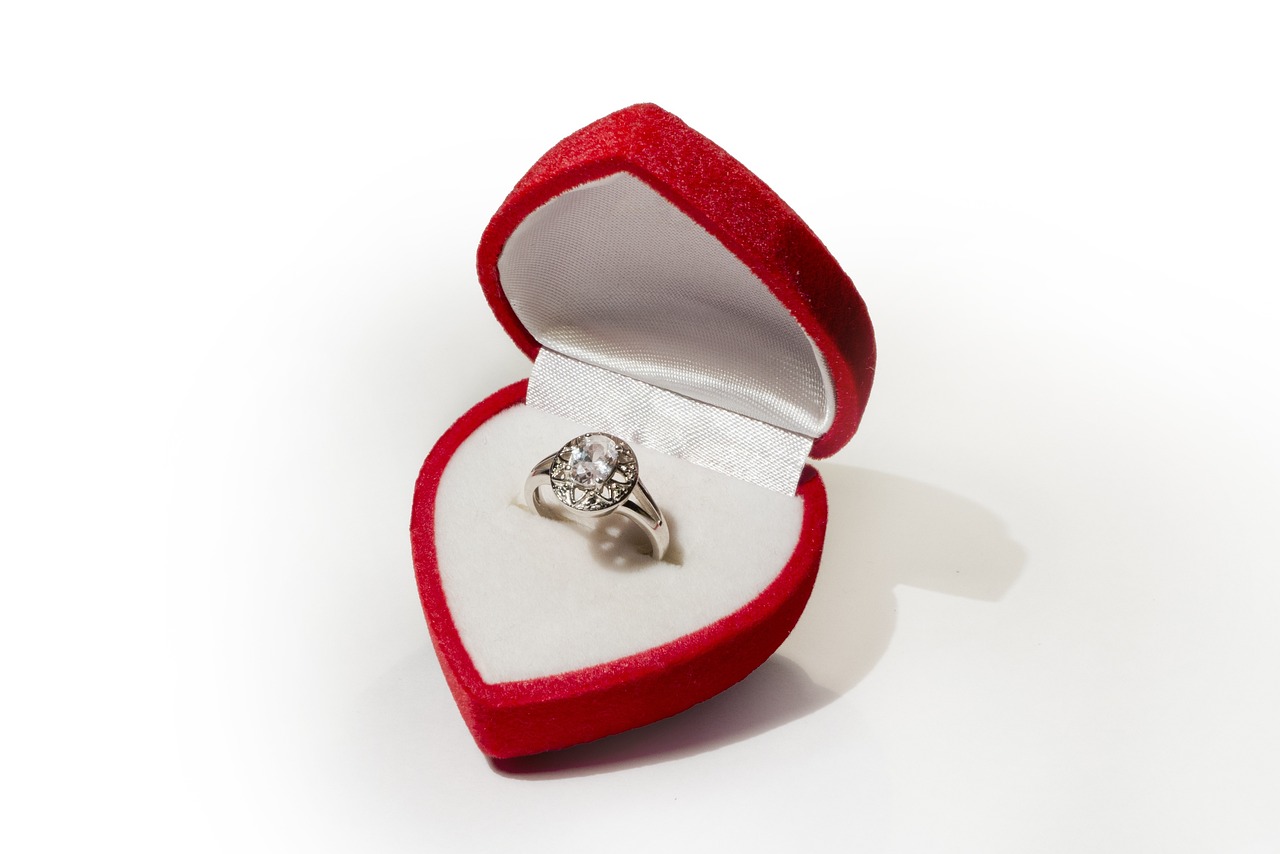
Where to Shop for Antique and Vintage Jewelry
Finding the right places to shop for antique and vintage jewelry can significantly enhance your overall experience. The options available range from charming local shops to expansive online marketplaces, each offering unique advantages.
Local Antique Shops
Visiting local antique shops is a rewarding experience. These shops often feature a curated selection of jewelry pieces, allowing you to examine them closely. Engaging with knowledgeable sellers can provide valuable insights into the history and craftsmanship of each piece. Additionally, local shops often have a unique atmosphere that enhances the shopping experience, making it feel more personal and special.
Antique Fairs and Markets
Antique fairs and markets are another excellent option for finding vintage jewelry. These events gather multiple vendors in one location, offering a diverse range of items. You can often find rare and unique pieces that are not available in standard retail settings. Moreover, the lively environment of an antique fair can make shopping an enjoyable outing.
Online Marketplaces
For those who prefer the convenience of shopping from home, online marketplaces provide a vast array of antique and vintage jewelry options. Websites like eBay, Etsy, and specialized antique jewelry sites allow you to browse thousands of listings. You can compare prices, read seller reviews, and even find pieces from international sellers. However, it’s essential to ensure that you are purchasing from reputable sellers to avoid counterfeit items.
Auctions
Participating in auctions, both online and in-person, can be an exciting way to acquire antique jewelry. Auctions often feature unique items with histories that add to their appeal. Bidding can create a sense of excitement, and if you do your research, you may find excellent deals on valuable pieces.
Conclusion
In conclusion, whether you choose to explore local antique shops, attend fairs, shop online, or participate in auctions, each option has its own benefits. By considering your preferences and doing thorough research, you can find the perfect place to shop for antique and vintage jewelry, ensuring a fulfilling and enriching experience.
Local Antique Shops and Fairs
offer an unparalleled opportunity for enthusiasts and collectors to immerse themselves in the rich history of jewelry. These venues are more than just shopping destinations; they are gateways to discovering unique pieces that tell a story.
When you visit a local antique shop, you have the chance to physically examine each item. This tactile experience is invaluable, as it allows you to assess the craftsmanship and condition of the jewelry. You can appreciate the intricate details that often go unnoticed in online listings. Moreover, engaging with knowledgeable sellers can enhance your understanding of the pieces, as they often share valuable insights about the history, materials, and techniques used in their creation.
Attending antique fairs is another exciting way to explore a diverse range of jewelry. These events often feature multiple vendors, providing a broader selection and the opportunity to compare pieces side by side. You can find everything from Victorian brooches to Art Deco rings, each with its own unique charm. Additionally, many sellers are willing to negotiate prices, which can lead to fantastic deals.
- Engagement with Sellers: The personal interaction with sellers often leads to learning about the provenance of a piece, which adds to its value.
- Unique Finds: Local shops often carry items not found in larger retail stores, making your collection truly one-of-a-kind.
- Community Experience: These venues foster a sense of community among antique lovers, creating a shared passion for history and craftsmanship.
In conclusion, exploring local antique shops and fairs is not just about shopping; it’s about connecting with history and finding pieces that resonate with your personal style. Whether you’re a seasoned collector or a curious newcomer, these experiences can enrich your understanding and appreciation of antique jewelry.
Online Marketplaces and Auctions
The Ultimate Guide to Antique and Vintage Jewelry Shopping
This comprehensive guide will explore the world of antique and vintage jewelry shopping, offering tips, insights, and essential information to help you make informed decisions and find unique pieces.
What is Antique and Vintage Jewelry?
Understanding the definitions and differences between antique and vintage jewelry is crucial for collectors and enthusiasts alike, as it sets the foundation for informed shopping and appreciating these unique pieces.
How to Identify Authentic Antique Jewelry
Identifying authentic antique jewelry requires knowledge of various characteristics, including craftsmanship, materials, and design styles that can help distinguish genuine pieces from reproductions or modern imitations.
Key Characteristics of Antique Jewelry
Familiarizing yourself with the key characteristics of antique jewelry, such as age, style, and craftsmanship, can significantly enhance your ability to recognize and appreciate genuine pieces when shopping.
Common Materials Used
Antique jewelry is often made from materials like gold, silver, and gemstones, each of which has its own historical significance and value that collectors should consider when evaluating a piece.
Craftsmanship and Design Styles
Understanding the various craftsmanship techniques and design styles throughout history, such as Art Deco or Victorian, can help you identify and appreciate the era of a particular piece of jewelry.
Tips for Buying Vintage Jewelry
When shopping for vintage jewelry, it’s essential to know what to look for, including quality, condition, and authenticity, to ensure you make a wise investment in your collection.
Where to Shop for Antique and Vintage Jewelry
Finding the right places to shop for antique and vintage jewelry can make a significant difference in your overall experience, with options ranging from local shops to online marketplaces.
Local Antique Shops and Fairs
Exploring local antique shops and fairs can provide a unique shopping experience, allowing you to see pieces up close and engage with knowledgeable sellers who can share valuable insights.
Online marketplaces and auctions offer a vast array of antique and vintage jewelry options, allowing you to browse and compare pieces from the comfort of your home while ensuring secure transactions.
- Convenience: Shop anytime and anywhere.
- Variety: Access to numerous sellers and unique items.
- Comparative Shopping: Easily compare prices and styles.
- Secure Payment Options: Ensures buyer protection.
How to Care for Antique and Vintage Jewelry
Proper care and maintenance of antique and vintage jewelry are essential to preserving their beauty and value, requiring specific techniques and products tailored to different materials and designs.
Cleaning and Maintenance Tips
Knowing how to clean and maintain your antique and vintage jewelry can significantly prolong its life, ensuring that each piece remains in excellent condition for years to come.
Storage Solutions for Preservation
Implementing proper storage solutions is vital for preserving antique and vintage jewelry, as it protects pieces from damage caused by environmental factors or improper handling.
Understanding the Value of Antique and Vintage Jewelry
Evaluating the value of antique and vintage jewelry involves considering various factors, including age, rarity, condition, and market demand, which can significantly influence pricing.
Factors Influencing Jewelry Value
Several factors influence the value of antique and vintage jewelry, including historical significance, craftsmanship, and the current market trends that collectors and buyers should be aware of.
How to Get Jewelry Appraised
Getting a professional appraisal can provide insight into the value of your antique and vintage jewelry, ensuring you have accurate information for insurance, selling, or personal knowledge.
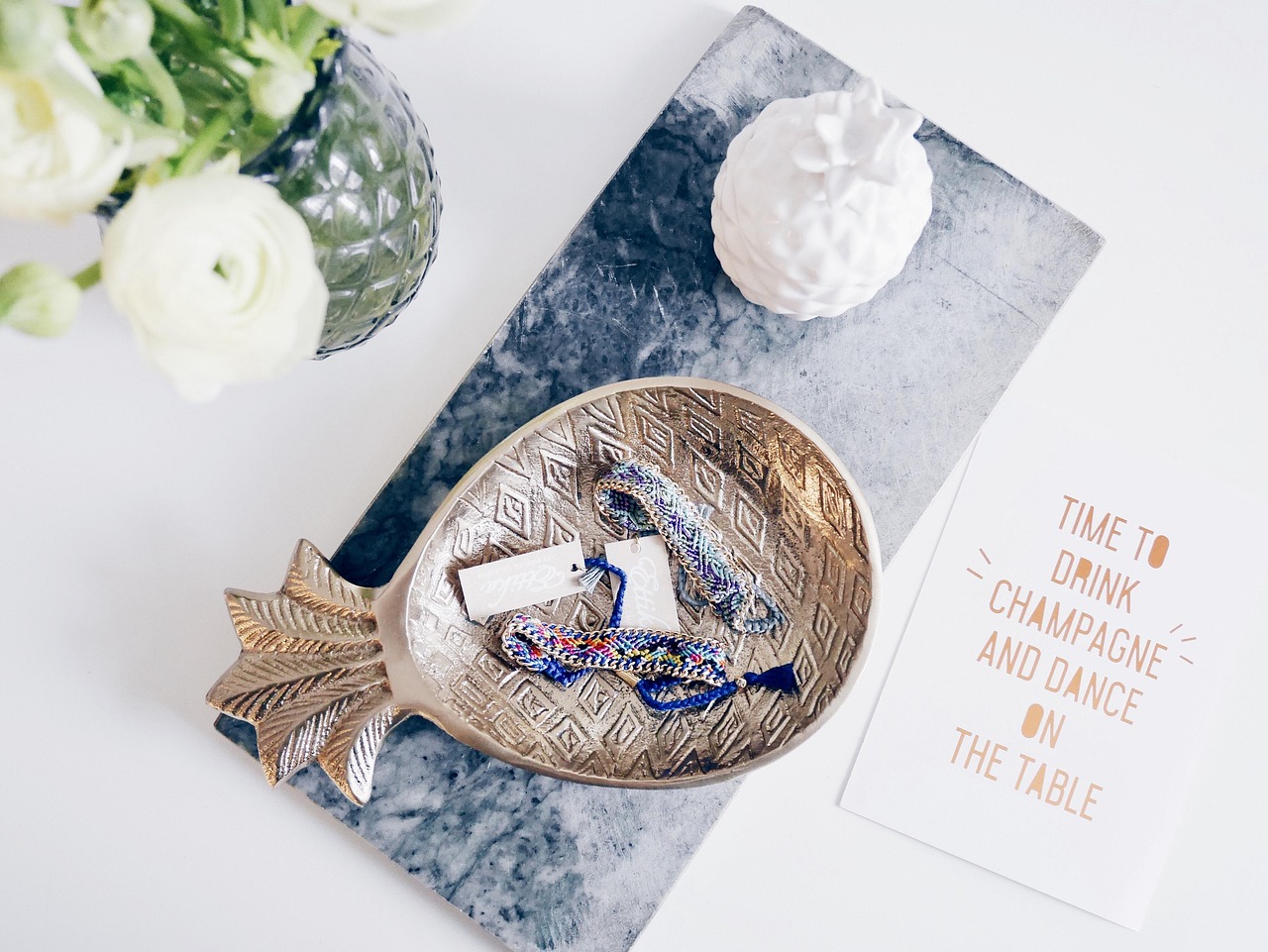
How to Care for Antique and Vintage Jewelry
Proper care and maintenance of antique and vintage jewelry are essential to preserving their beauty and value. These treasured pieces often carry historical significance and sentimental value, making it crucial to understand the specific techniques and products tailored for different materials and designs.
- Understanding Different Materials: Antique and vintage jewelry can be made from a variety of materials, including gold, silver, platinum, and various gemstones. Each material requires different care methods. For instance, while gold may tarnish less than silver, it can still scratch easily.
- Regular Cleaning: Cleaning your jewelry regularly can help maintain its luster. Use a soft, lint-free cloth to gently wipe down pieces after wearing them. For deeper cleaning, consider using a mild soap solution, but always check if the gemstones or settings are safe for such methods.
- Avoiding Harsh Chemicals: Many common cleaning agents can damage antique and vintage jewelry. Always avoid bleach, ammonia, and other harsh chemicals. Instead, opt for gentle, jewelry-specific cleaners.
- Professional Maintenance: For intricate pieces, it’s advisable to seek professional help for cleaning and repairs. Experts can ensure that delicate settings and stones are handled properly, preserving the integrity of the piece.
Storage Solutions for Preservation
Implementing proper storage solutions is vital for preserving antique and vintage jewelry. Here are some tips:
- Use Soft Pouches or Boxes: Store each piece separately in soft pouches or lined boxes to prevent scratching and tangling.
- Avoid Humidity: Keep jewelry in a cool, dry place. Humidity can cause tarnishing and damage to certain materials.
- Regular Inspections: Periodically check your jewelry for signs of damage or wear. Early detection can prevent more significant issues down the line.
In conclusion, taking the time to properly care for antique and vintage jewelry not only preserves their beauty but also enhances their longevity and value. By understanding the specific needs of different materials and implementing effective cleaning and storage practices, you can ensure that these precious pieces remain cherished for generations to come.
Cleaning and Maintenance Tips
Cleaning and maintaining your antique and vintage jewelry is crucial for preserving its beauty and ensuring its longevity. Each piece tells a story, and with the right care, you can keep these stories alive for generations. Here are some essential tips to help you properly care for your treasured items.
- Regular Cleaning: It is important to clean your jewelry regularly to remove dirt and oils that can accumulate over time. Use a soft, lint-free cloth to gently wipe the surface of the jewelry after each wear. For deeper cleaning, a mild soap solution with warm water can be effective. Avoid harsh chemicals that can damage the materials.
- Know Your Materials: Different materials require different care methods. For instance, gold and silver can generally be cleaned with a soft cloth, while gemstones may require special attention. Research the specific needs of your jewelry to avoid damaging it.
- Use Appropriate Tools: Invest in proper cleaning tools such as a soft brush for intricate designs and a jewelry polishing cloth. These tools can help you reach difficult areas without scratching the surface.
- Avoid Excessive Moisture: Water can be detrimental to certain materials, especially if your jewelry contains delicate stones or intricate settings. Remove your jewelry before swimming, bathing, or doing household chores to prevent exposure to moisture.
- Professional Cleaning: Consider having your antique and vintage jewelry professionally cleaned and inspected at least once a year. Professionals can address issues that you might overlook and ensure that your pieces remain in excellent condition.
- Storage Matters: Store your jewelry in a cool, dry place away from direct sunlight. Use soft pouches or a jewelry box with individual compartments to prevent scratching and tangling.
By following these , you can ensure that your antique and vintage jewelry remains in remarkable condition, allowing you to enjoy its beauty and history for years to come.
Storage Solutions for Preservation
When it comes to preserving the beauty and integrity of antique and vintage jewelry, implementing proper storage solutions is absolutely essential. These timeless pieces, often crafted with intricate details and valuable materials, require special care to protect them from potential damage. Environmental factors such as humidity, light, and temperature fluctuations can cause deterioration, while improper handling can lead to scratches, tarnishing, or even breakage.
To ensure the longevity of your cherished jewelry, consider the following storage solutions:
- Use Soft Pouches or Cases: Store each piece in a soft pouch or a lined jewelry case to prevent scratches and tangling. This is particularly important for items made of delicate materials like pearls or gold.
- Avoid Direct Sunlight: Keep your jewelry away from direct sunlight, which can fade colors and damage certain gemstones. A cool, dark place is ideal for storage.
- Control Humidity: High humidity can lead to tarnishing, especially in silver pieces. Consider using silica gel packets in your storage area to absorb excess moisture.
- Separate Storage: Store different types of jewelry separately. For example, avoid placing gold and silver pieces together, as they can scratch each other. Similarly, keep gemstones apart to prevent chipping.
- Regular Checks: Periodically inspect your jewelry for any signs of damage or wear. Early detection can prevent further deterioration and costly repairs.
By following these guidelines, you can create a safe environment for your antique and vintage jewelry. Remember, preservation is not just about storage; it’s about maintaining the heritage and history that each piece represents. Investing time and effort into proper care will ensure that these treasures can be enjoyed for generations to come.
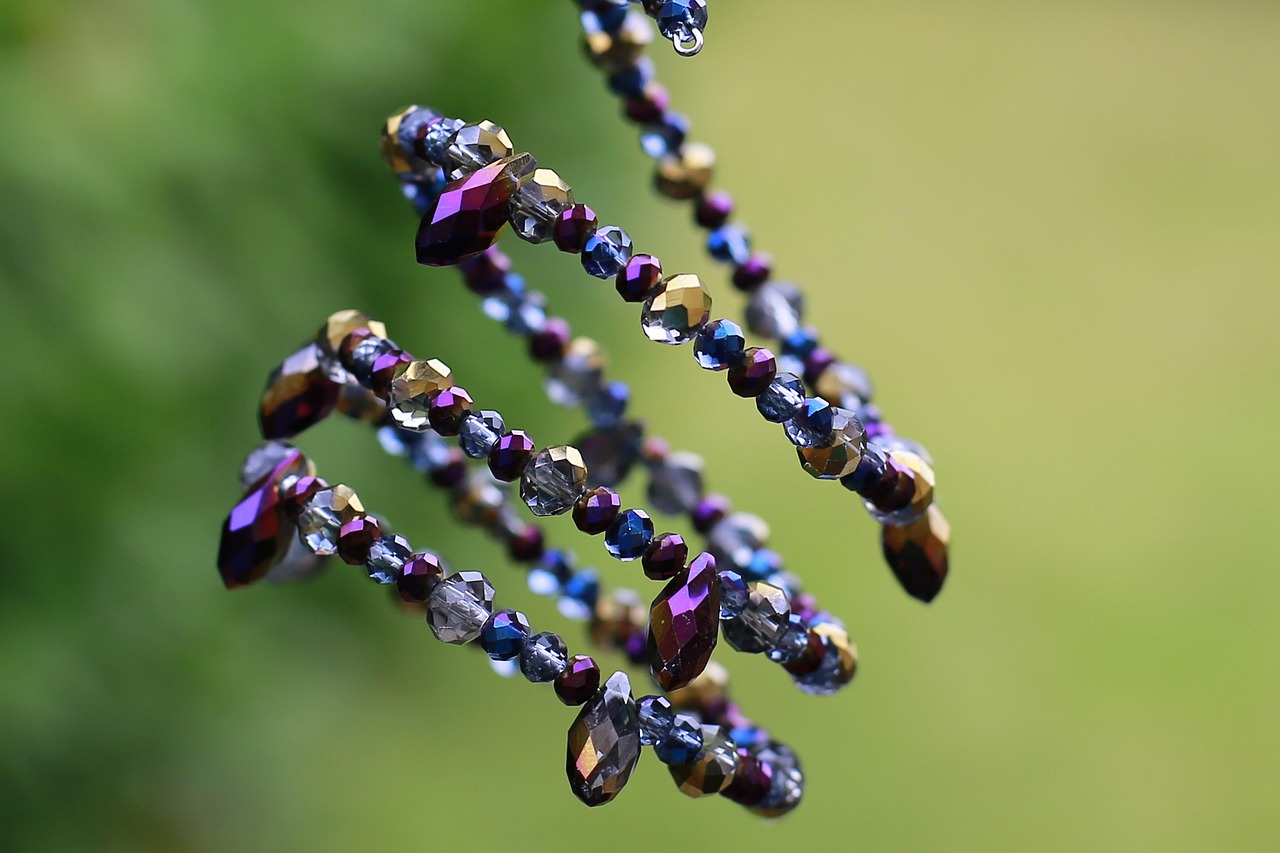
Understanding the Value of Antique and Vintage Jewelry
is essential for collectors and enthusiasts alike. The value of these unique pieces is determined by a variety of factors that contribute to their desirability and market price.
When evaluating antique and vintage jewelry, consider the following key elements:
- Age: The age of the piece is one of the most significant factors. Generally, jewelry that is over 100 years old qualifies as antique, while vintage pieces are typically at least 20 years old. The era in which the jewelry was created can greatly influence its appeal and value.
- Rarity: Rarity plays a crucial role in determining value. Limited production runs, unique designs, or pieces associated with notable historical events or figures can fetch higher prices due to their scarcity.
- Condition: The overall condition of the jewelry is paramount. Items that have been well-preserved or restored properly are often valued more highly than those showing significant wear or damage. Minor repairs can enhance a piece’s appeal, while extensive restoration may diminish its value.
- Market Demand: The current market demand for specific styles or periods can fluctuate, impacting prices. Trends in fashion and collector interest can lead to price increases or decreases, making it essential to stay informed about market trends.
Additionally, understanding the historical significance and craftsmanship of a piece can provide deeper insights into its value. For example, jewelry from renowned designers or periods known for exceptional craftsmanship, like the Art Nouveau or Art Deco movements, often commands higher prices.
In conclusion, evaluating the value of antique and vintage jewelry requires a comprehensive understanding of multiple factors, including age, rarity, condition, and market demand. By considering these elements, collectors can make informed decisions and appreciate the true worth of their jewelry.
Factors Influencing Jewelry Value
The value of antique and vintage jewelry is determined by a myriad of factors that collectors and enthusiasts should understand. This knowledge not only aids in making informed purchasing decisions but also enhances the appreciation of these unique pieces.
- Historical Significance: The history behind a piece can greatly influence its value. Jewelry that has a rich story, such as being owned by a notable figure or linked to a significant event, often commands higher prices. Collectors are particularly drawn to pieces that reflect cultural or historical importance.
- Craftsmanship: The level of skill and artistry involved in creating a piece is a crucial factor. Handcrafted items, especially those from renowned artisans or specific historical periods, are typically more valuable than mass-produced alternatives. The intricacy of design and the techniques used can also add to a piece’s worth.
- Materials Used: The quality and rarity of materials play a significant role in valuation. Precious metals like gold, silver, and platinum, along with high-quality gemstones, can significantly enhance a piece’s market value. The condition of these materials is equally important; for example, well-preserved pieces will generally be worth more than those showing signs of wear.
- Market Trends: The current demand for certain styles or periods can fluctuate, impacting prices. Collectors should stay informed about market trends, as specific types of jewelry may experience increased popularity, leading to higher valuations. Understanding these trends can be vital for both buyers and sellers.
- Provenance: The documented history of ownership, or provenance, can affect a piece’s value. A well-documented history can provide assurance of authenticity and can significantly enhance desirability among collectors.
In conclusion, understanding these factors can empower collectors and buyers to make informed decisions in the antique and vintage jewelry market. By considering historical significance, craftsmanship, materials, market trends, and provenance, one can appreciate not only the beauty of these pieces but also their true value.
How to Get Jewelry Appraised
Getting a professional appraisal for your antique and vintage jewelry is a crucial step in understanding its true worth. This process not only provides you with valuable insights into the piece’s market value but also ensures that you are well-informed for various purposes, such as insurance coverage, selling, or simply enhancing your personal knowledge.
When seeking an appraisal, it is essential to choose a qualified and experienced appraiser who specializes in antique and vintage jewelry. These professionals possess the necessary expertise to assess the jewelry accurately, taking into account its age, condition, and historical significance.
- Research Credentials: Ensure that the appraiser has relevant certifications and a solid reputation within the industry.
- Ask for References: Request references from previous clients to gauge their experience and satisfaction.
- Understand the Appraisal Process: Familiarize yourself with what the appraisal entails, including the methods used to evaluate the piece.
During the appraisal, the appraiser will examine various aspects of your jewelry, including:
| Aspect | Details |
|---|---|
| Materials | Identification of metals and gemstones used in the piece. |
| Craftsmanship | Assessment of the quality of workmanship and design. |
| Condition | Evaluation of any damage or wear that may affect value. |
| Market Trends | Consideration of current market demand for similar items. |
After the appraisal, you will receive a detailed report outlining the jewelry’s value and any relevant historical context. This document is invaluable for insurance purposes, as it provides proof of value in case of loss or damage. Additionally, having a professional appraisal can enhance your confidence when selling the piece, ensuring you receive a fair price.
In conclusion, investing in a professional appraisal for your antique and vintage jewelry is a wise decision that pays off in multiple ways. It equips you with essential knowledge, protects your investment, and enhances your appreciation of these unique treasures.
Frequently Asked Questions
- What defines antique and vintage jewelry?
Antique jewelry is typically over 100 years old, while vintage jewelry is usually at least 20 years old but less than 100. Understanding these definitions helps collectors appreciate the historical context of each piece.
- How can I tell if my jewelry is authentic antique?
To identify authentic antique jewelry, examine the craftsmanship, materials, and design styles. Look for hallmarks, unique features, and signs of aging that indicate a piece’s authenticity.
- Where can I find quality antique and vintage jewelry?
You can discover quality pieces at local antique shops, fairs, and online marketplaces. Each option offers unique advantages, from hands-on inspection to a broader selection at your fingertips.
- What are the best practices for caring for vintage jewelry?
Proper care includes gentle cleaning with appropriate materials, avoiding harsh chemicals, and storing pieces in a safe, dry place to prevent damage. This ensures your jewelry remains beautiful for years!
- How is the value of antique jewelry determined?
The value is influenced by factors such as age, rarity, condition, and market demand. Getting a professional appraisal can provide a more accurate estimate of your jewelry’s worth.




